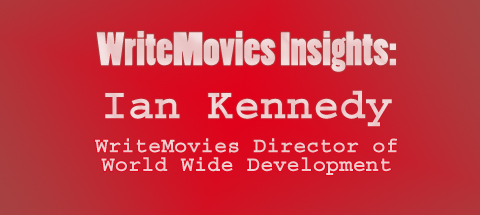
by John | Jan 20, 2020 | Writing Insights
In Part 1 of this Writing Insights series, we discussed how exposition is often a necessary evil in scriptwriting for conveying information that your audience needs to know, and how sometimes it’s better to use the visual medium of film instead.
But what happens when visuals aren’t enough? What do you do when you have to use dialogue instead? The answer is to make exposition so interesting that the audience doesn’t notice that it’s there – they’re too engrossed to get bored by the dreaded “info-dump” or feel that the characters are speaking in a way that might otherwise seem unnatural.
There are quite a few different ways to make exposition interesting, though. Here are a few of our hints and tips on how to go about it…
- Ignite the audience’s curiosity about what you’re about to reveal. Pose it as a question – for example, THE MATRIX‘s famous: “What is The Matrix?” – and make the audience want to know the answer. Then, when the answer is given, they’ll already be interested!
- Another trick used by THE MATRIX is including exposition in situations that are exciting – containing striking visuals and action – so that the dialogue is enhanced by what’s going on around it. Morpheus could have explained the rules of The Matrix to Neo over a nice cup of coffee – but instead, he does it through a demonstration of kung-fu.
- Make your protagonist be an outsider. As mentioned in Part 1, we don’t tell people things that they already know – but if there’s someone who doesn’t know the world or situation, then you’ve got a good excuse. And that means that it no longer feels unnatural!
- Think about what else you might be able to convey through the exposition itself. Character is best revealed through action – the things we choose to do, the decisions we make – so consider what you might be revealing about the character who is talking. The titular character of the TV show SHERLOCK comes out with huge amounts of exposition, but it feels fine because it’s in character to show off and it tells us a lot about who he is.
So there are our hints and tips to make exposition interesting. Keep these in mind the next time you’re writing a script, and make sure that your dialogue shines!

by John | Jan 13, 2020 | Writing Insights
When you need to convey information in your script – about characters’ backstories, their relationships, the setting or story – it’s a natural instinct to turn straight to exposition, telling the audience what they need to know through dialogue.
And there’s no doubt that exposition is a necessary evil in scriptwriting. There are always going to be things that need to be established for the audience to understand what’s going on in your story!
Exposition is almost always a problem, though. Firstly, people don’t really talk in an expositional manner – stating a whole load of facts, one after the other – and they don’t tell people things they already know. So exposition often feels fake or forced, seeming to be there just for the audience’s sake.
The other problem is that it often has a negative effect on the story. An “info-dump”, as it’s often known, slows the narrative, putting the story on hold so the audience can learn things. But, overwhelmed by the amount of information being thrown at them, they’ll often just switch off!
So how do you get around this problem? How do you communicate the information the audience needs without boring them, overwhelming them, or making your characters talk like aliens trying (and failing) to impersonate human beings?
Well, the first thing you can do is to fully utilize the visual medium of film, and forget about dialogue entirely…
As a screenwriter, looking at the page all day, it can be easy to get stuck in a world of words. “Surely,” you think to yourself, “if I want to get some information across, someone has to state it out loud.”
But sight is the sense that human beings use the most, and it’s possible to communicate a huge amount about all kinds of things through nothing but visuals. An actor can tell us a lot about a character’s feelings with just a glance or an expression – or even by doing nothing at all!
The famous “Married Life” segment from UP is a great example of how to use visuals well. Decades of marriage are summarised – complete with information about the characters, their relationship, their families, and the things they go through – in four short minutes, and without a single word being spoken.
The power of visuals applies to world-building, too. The famous opening shot of STAR WARS sees Princess Leia’s tiny ship being pursued by the massive Star Destroyer of Darth Vader, and the difference of scale immediately tells us a lot about the two sides. Darth Vader and the Empire are powerful and dominant, while Princess Leia and the Rebel Alliance are the underdogs.
So whenever you think you need to use exposition to get some information across, stop for just a minute and think. Maybe there’s a way to get things across without anyone having to speak a single word. Try to picture things instead. Don’t forget – fundamentally, you’re not just writing a screenplay, you’re writing a film as well!
Keep an eye out for Part 2 of this article, where we’ll be talking about those times when you can’t use visuals – and how to make exposition interesting, so that the audience won’t even notice it’s there!

by John | Jul 1, 2019 | Writing Insights
If you can’t write dialogue, you can’t make it as a screenwriter. In a medium where it’s all but impossible to show thoughts and feelings, it’s dialogue that drives the plot, demonstrates who the characters are, and makes up most of the word count.
 The average novel runs to about 90,000 words. The average screenplay? Just 15,000. That’s 75,000 words of description gone missing, leaving the dialogue to do most of the heavy lifting.
The average novel runs to about 90,000 words. The average screenplay? Just 15,000. That’s 75,000 words of description gone missing, leaving the dialogue to do most of the heavy lifting.
Okay, there are films that have succeeded, against the odds, using only a few spoken words: ALL IS LOST is a great example. But for the most part, knowing how to write dialogue is a key skill for any screenwriter. Here are our tips…
- Give each character a different voice. A lot of scripts have characters that all speak exactly the same way – usually the same way as the writer! But if you make your characters talk in their own unique way, not only is it more realistic but it also gives us a better idea of their personalities.
- Avoid exposition. If the audience needs to know something, find a natural way to get the information across instead of throwing in a conversation that feels contrived. There are no worse words to read in a screenplay than “As you know…” If the character already knows it, why are they being told again?
- Listen to how people actually speak. Record a conversation and pay attention to the rhythm and style of real speech; when you write dialogue, that’s the kind of style you want to replicate, although you can cut out all the “um”s and “erm”s!
- When writing a foreign character, don’t turn them into a cliche. Treat them the same as all your other characters – as real, rounded people! Just because their grasp of English may not be perfect, that doesn’t mean it’s okay to just use a stereotype.
- Don’t overuse parentheticals to describe how a line should be delivered. A screenwriter’s job is to write the screenplay, not to direct the film itself; actors and directors won’t appreciate you trying to control how things are said. A lot of the time it’s unnecessary anyway – unless something is being said ironically, it should be clear from the words themselves how to say the line!
So there you have it – now you should know how to write dialogue in your screenplay, and make it stand out over the competition. But of course, this is just one of the skills you’ll need. There are a great many more things to learn…
If you want more hints and tips on screenwriting, check out our other Writing Insights articles by clicking here!

by WriteMovies | Jul 1, 2016 | Highlights, Ian Kennedy, Updates, Writing Insights

By Ian Kennedy, WriteMovies Director of World Wide Development:
“You should never treat ‘non-selection’ as being ‘rejection’, only as a kind of feedback about how your script currently compares and competes against its rivals (on balance of risk, for producers)…” Ian’s tips and feedback on six months of scripts submitted to WriteMovies.
(more…)




